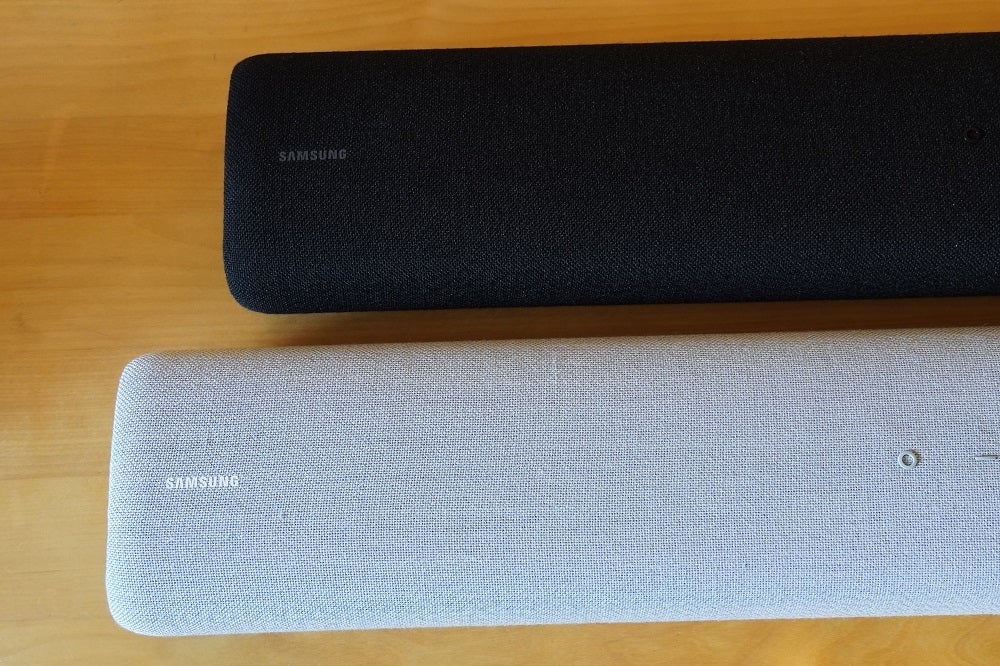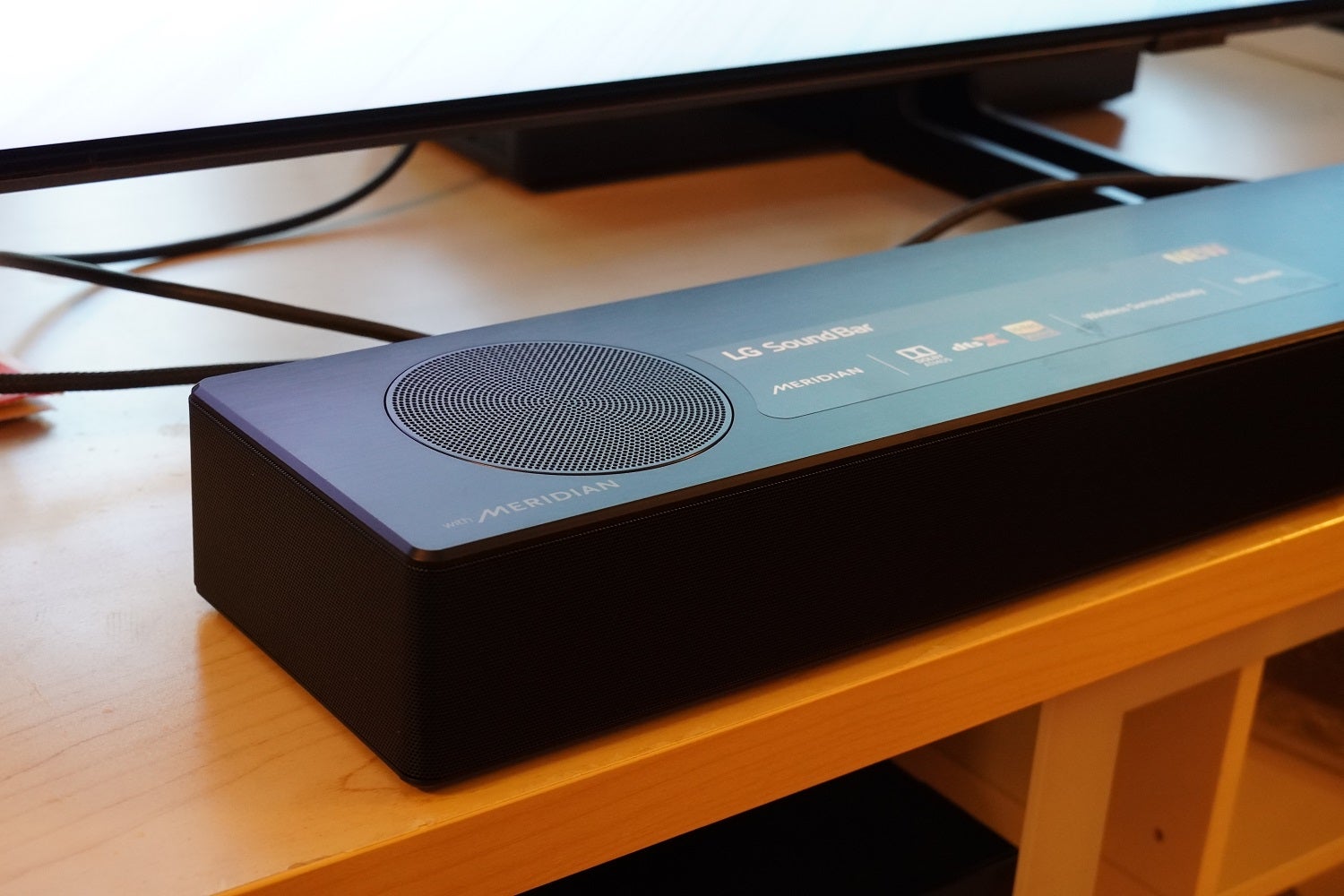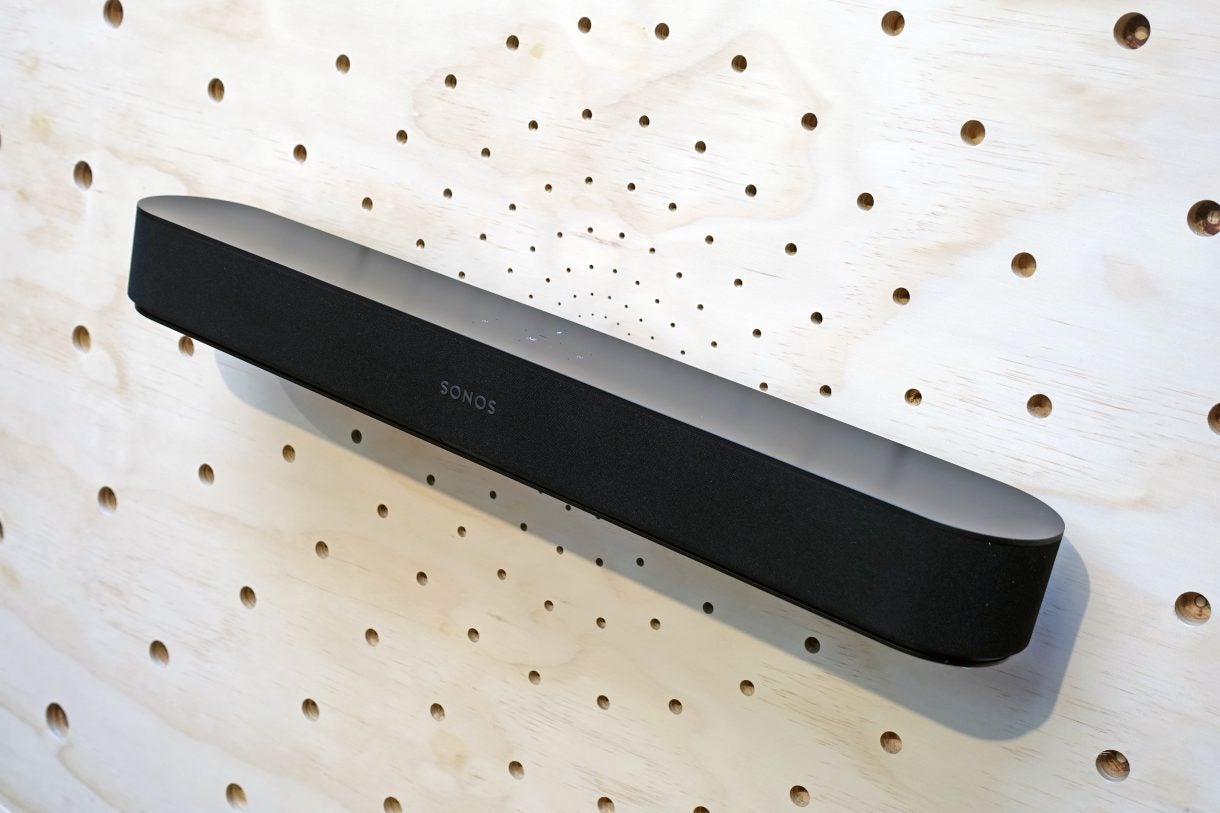JBL Bar 5.0 MultiBeam Review
A compact-sized soundbar with Atmos support
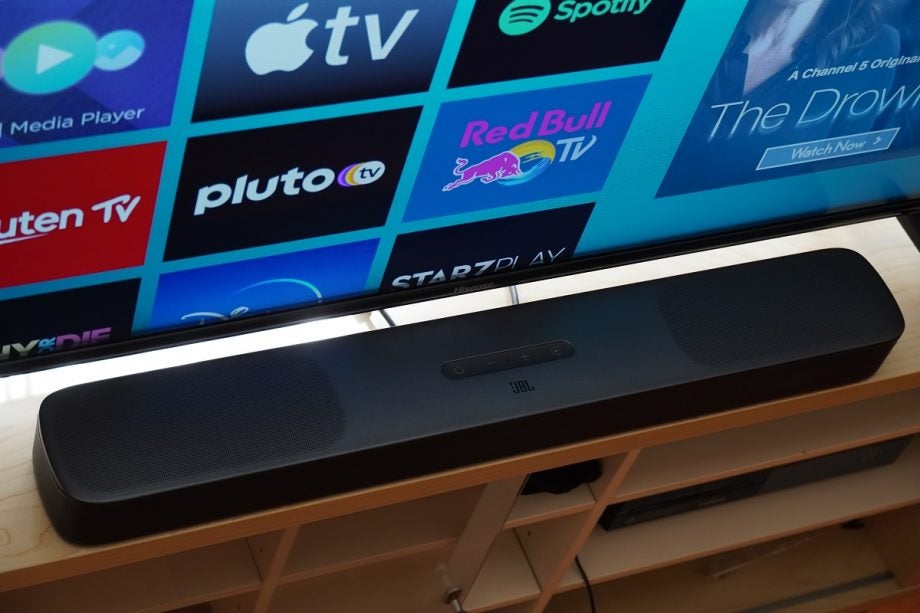

Verdict
The JBL Bar 5.0 fits a tremendous amount of value into its compact design. Sound quality is good, Atmos height channels are effective enough, and there are plenty of options for streaming. Dolby Vision passthrough is an issue, though.
Pros
- Compact size
- Atmos + MultiBeam sound
- Multi-room support
- Energetic sound
- Affordable
Cons
- Front-heavy Atmos presentation
- Issue with Dolby Vision passthrough
- Bluetooth music playback a little lethargic
Availability
- UKRRP: £349
- USARRP: $349
- EuropeRRP: €399
- AustraliaRRP: AU$599
Key Features
- AudioDolby Atmos with JBL’s MultiBeam virtual surround sound technology
- Multi-room supportAlexa, AirPlay and Google multi-room support
- InputsHDMI input for passing 4K HDR sources to the TV via the soundbar
Introduction
The JBL Bar 5.0 MultiBeam is the latest audio product looking to capitalise on the popularity of the compact soundbar market.
Interest in compact soundbars has grown as people look for alternatives to a full-sized sound system to boost their TV’s audio for an affordable price.
And the JBL Bar 5.0 MultiBeam aims to do just that and more. It can play Atmos soundtracks, slot into a multi-room audio system, and (it claims) create the impression of surround sound through its MultiBeam technology. Not too shabby for £349.
Design – Small in stature
- Small footprint
- Slick looks
- Easy to use
The Bar 5.0 MultiBeam measures 709 x 58 x 101mm (WHD) – which is slightly wider and a smidge shorter than the Sonos Beam. It should have no issue sitting beneath most TVs, but if space is at a premium, a wall-mount bracket is included.
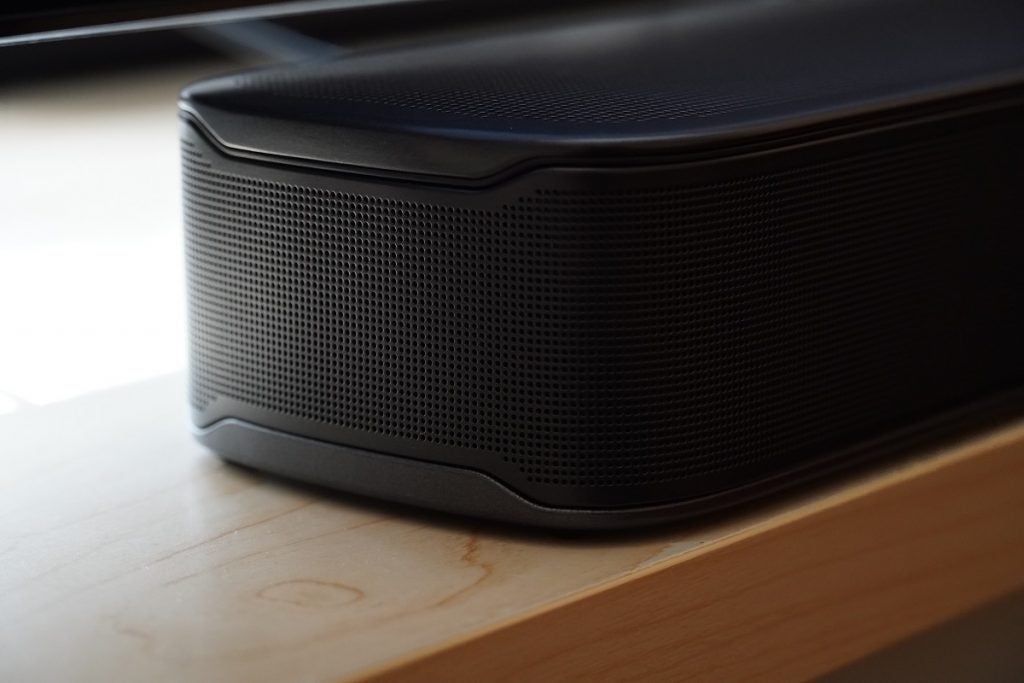
Sporting a black exterior, at 2.8kg it’s quite weighty. I have no qualms with the quality of the product itself.
The rounded edges soften its look, with a transparent acoustic mesh grille wrapping all the way round and some grey metal accents adding a bit of flash. There’s a front-facing display that’s big and bright enough to read from afar, while connections sit in a recessed area around the back. Everything is neat and tidy.
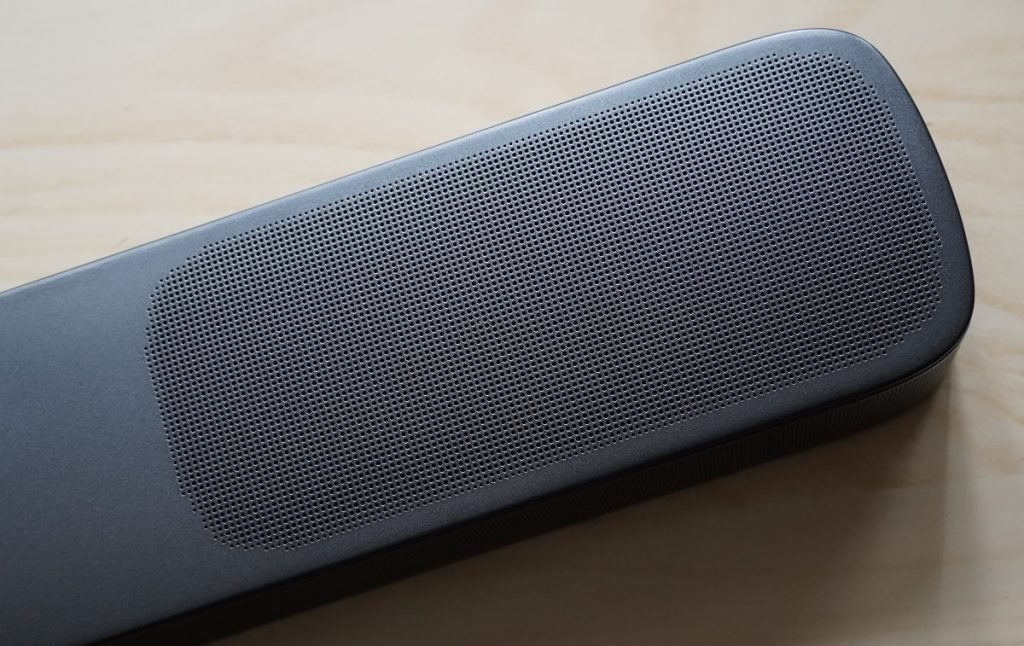
On top are two grilles (which are woofer vents – not upfiring speakers), and there are touch controls in the middle for volume, power and input selection. Hold down power and input for more than two seconds and the JBL reverts to factory settings.
If you don’t want to get up from your seat, there’s a simple remote that includes the aforementioned controls, plus HDMI and Atmos buttons. The former begins the MultiBeam calibration process if held for 10 seconds, while the latter turns Atmos on and off. A press on the HDMI button switches to the JBL Bar’s HDMI input.
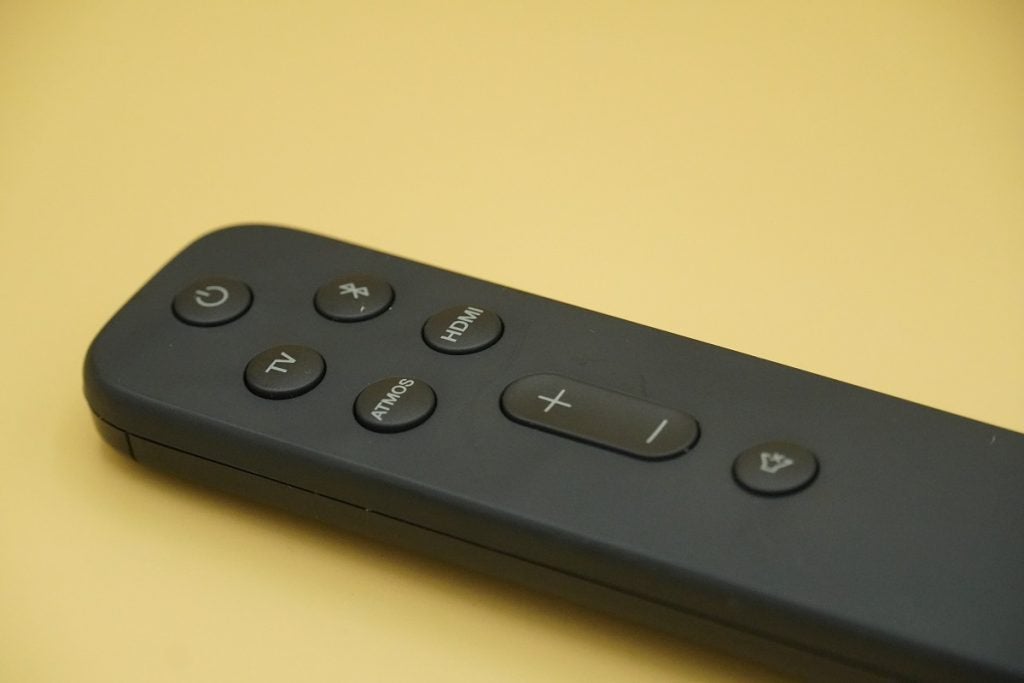
Features – Lots of avenues for piping in audio
- Alexa, Apple and Google multi-room support
- Issues with 4K Dolby Vision passthrough
- HDMI input and output
Having the HDMI input means a source can be fed into the bar, and plugging in a Humax Aura set-top box and Panasonic DP-UB820 worked well enough.
However, the JBL passes through 4K, HDR10 and Dolby Vision signals to varying levels of success. Watching Tom Clancy’s Without Remorse through the Aura in 4K was fine enough; His Dark Materials on the iPlayer came through in 4K HLG (and in pretty decent quality, too).
Using the DP-UB820 4K player to watch Casino Royale and Spider-Man: Homecoming in Dolby Vision produced a black screen, although the JBL was happy to play said titles in HDR10. The same issue arose with an LG G1 OLED, so we’ve asked JBL if there is a potential issue.
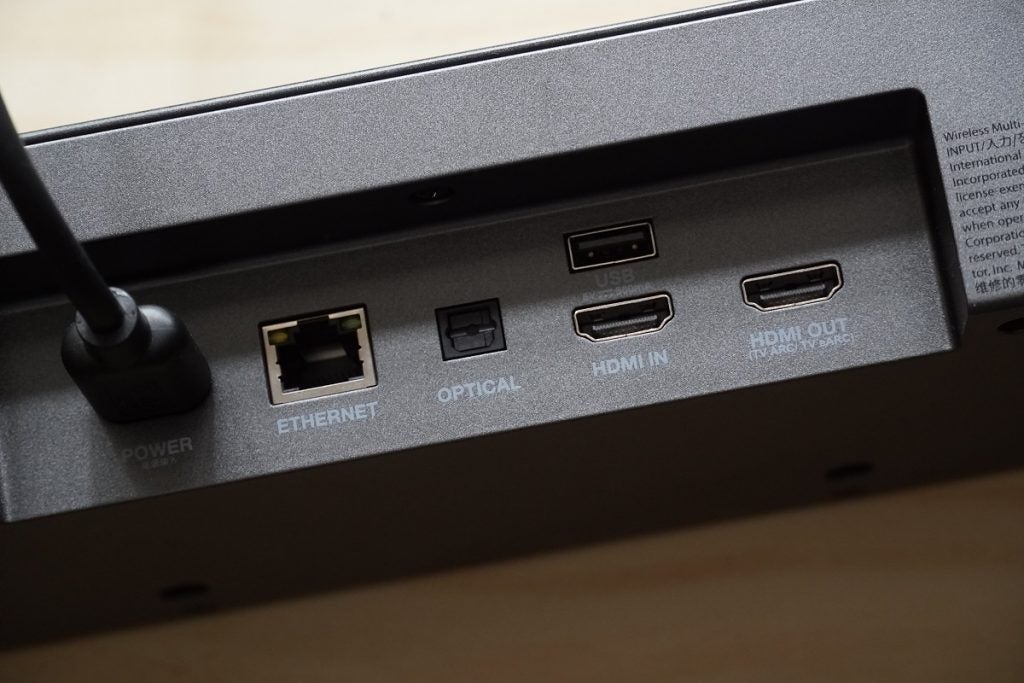
The HDMI output supports eARC for a full-fat Atmos signal. Other connections include a USB port (service-only in the UK, playback in the US), LAN Ethernet and optical. Wireless options include Bluetooth 4.2, while the inclusion of Wi-Fi opens a breadth of options.
There’s Apple AirPlay 2 for iOS devices, with the Amazon ecosystem covered with Alexa Multi Room Music support. Google support brings access to that ecosystem’s multi-room, as well as casting music from supported apps (such as Spotify) via built-in Chromecast. I’ve streamed audiobooks to podcasts and music streaming services to the Bar 5.0, and the only slight issue has been slightly tardy playback with AirPlay 2.
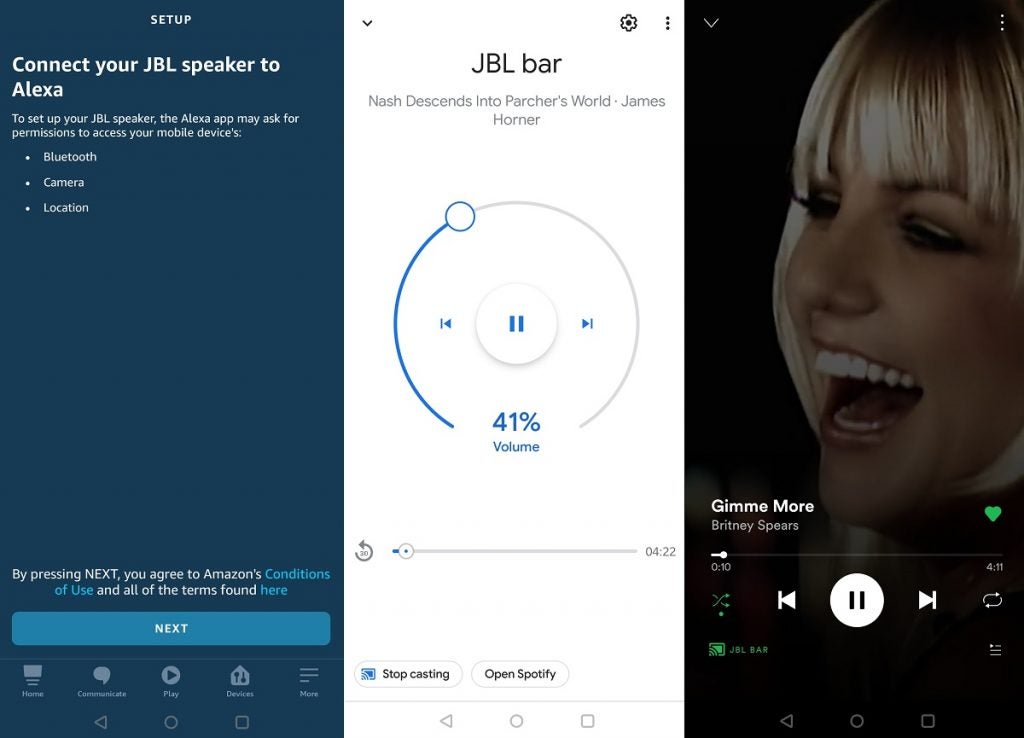
Sound quality – A raucous performer
- Plenty of energy and dynamism
- Solid height effects
- Decent bass
When it comes to audio, the JBL’s performance is a spirited one: energetic, engaging, and bigger than you might expect from its five 48mm x 80mm racetrack drivers and four 75mm passive radiators. There are some caveats, but I’d wager none you’d find unsurprising given its compact form.
Beginning with the opening scene of Blade Runner 2049 (Atmos), it’s rendered in a big and expansive manner. As K’s Spinner descends on Sapper Morton’s farm, I could hear the thrust of the engines above a 65-inch TV, so it’s no slouch in terms of elevation.
The same solid sense of the height channels is present throughout Spider-Man: Homecoming (Atmos), especially in the aerial scenes with Spider-Man, Iron Man and the Vulture flying in and out.
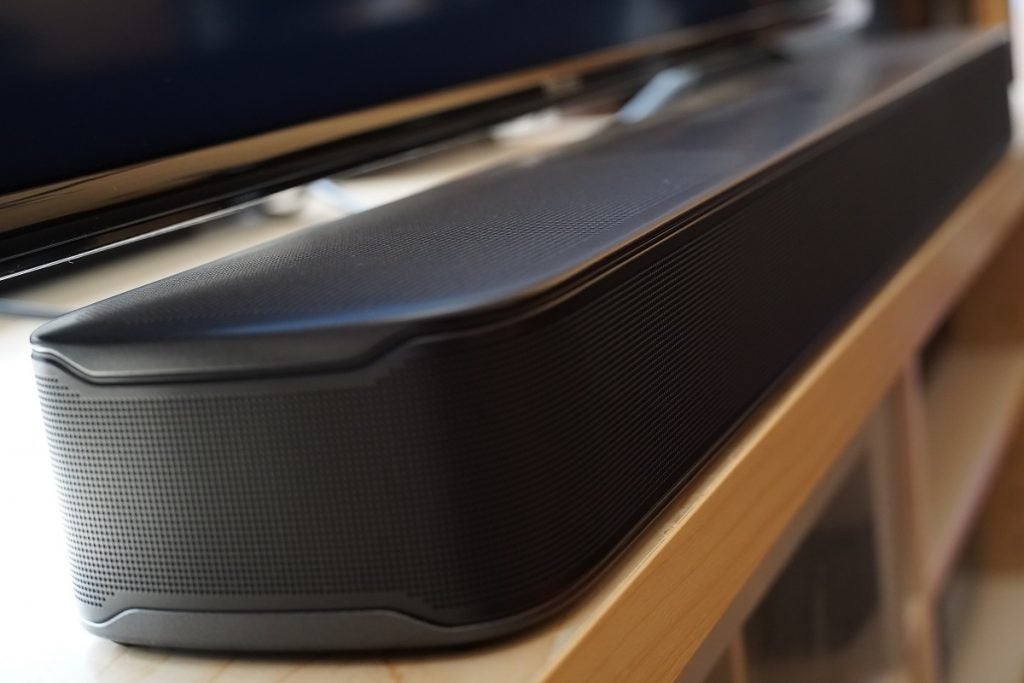
With the volume set at less than 10, the JBL is a sedate listen (at least with some TVs). Nudge it past 11 and it’s 0-60mph where dynamics are concerned. Shifts from quiet to loud are impactful, and it isn’t lacking for intensity either.
That energy gives the impression of a sound that’s bigger than JBL Bar 5.0’s form, but it’s fully communicable in quiet moments, too. The scene where Howard, Michelle and Emmett sit down for dinner in 10 Cloverfield Lane (Atmos) gives the Bar 5.0 a chance to pick up on more subtle moments – the hum of the generator in the background and aural clues, such as when Michelle pinches Howard’s keys.
It’s when tracks get hectic that the JBL isn’t as adept. The chaos of the ferry scene in Homecoming prioritises energy and nuance goes overboard in the process.
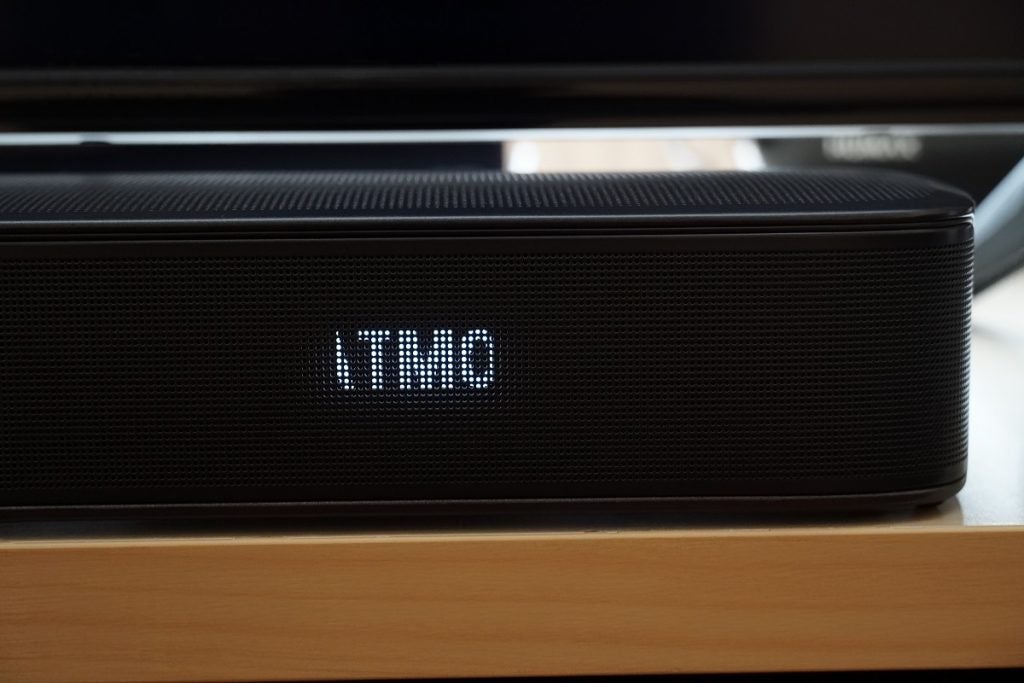
Dialogue is presented naturally enough. You can hear the difference in Peter Parker’s voice with his mask on or not, while in Transformers, the Autobots have a weighty, distinctive presence. Watching daytime TV you get a clear, precise delivery, irrespective of what’s on.
One criticism I do have is dialogue in action-heavy scenes. The ‘centre’ channel could be more pronounced and separated, and when dialogue is mixed with action, it’s flatly described and doesn’t stand out above the whizz-bang effects.
Bass is the most qualified aspect of the JBL’s performance. Low frequencies have enough presence to register, and it’s easily better than most flatscreen TVs. The JBL handles Blade Runner 2049’s thunderous soundtrack with pretty good low-frequency detail – what it lacks is bass extension and depth.
So the JBL isn’t going to go all the way down to the low notes in the way a subwoofer separate would. For casual home cinema users, however, the passive radiators provide a decent imitation.
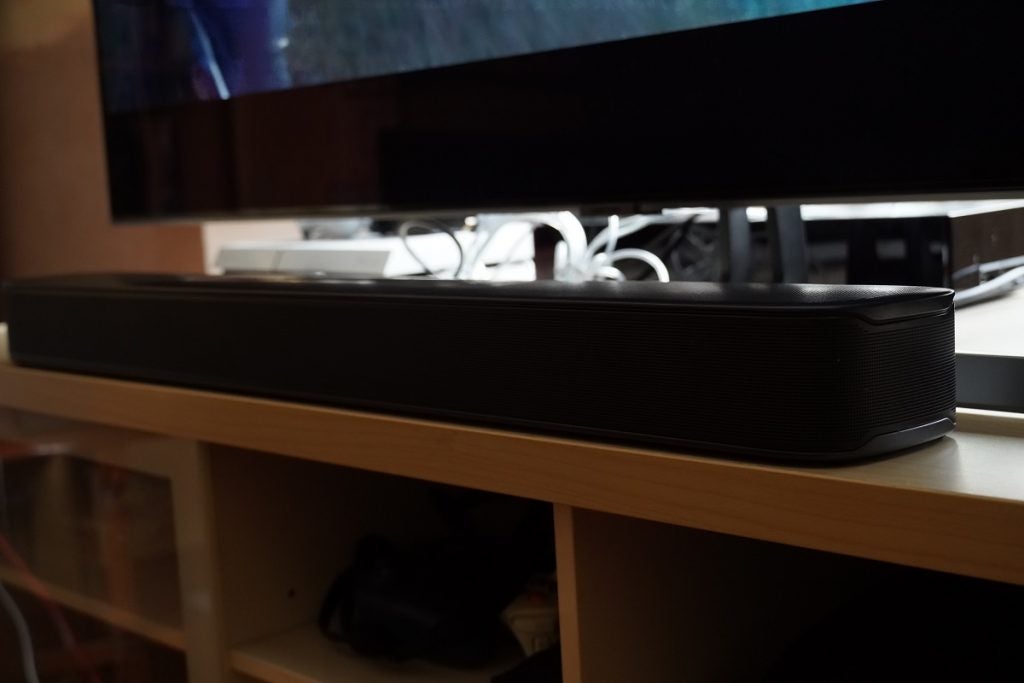
The two racetrack drivers angled out towards the sides create a wider soundstage, especially when JBL’s MultiBeam technology is engaged. The effect of it firing sound at the listener and bouncing sound off walls to create the impression of surround sound is somewhat overstated – I didn’t get that feeling from where I sat – but the difference between the opening heist in Baby Driver in Dolby Atmos and in Dolby Atmos MultiBeam is that the latter is wider and more spacious, with a better sense of effects being steered towards the sides. And legacy Dolby and DTS soundtracks fare well with Multibeam on, expanding the soundfield and bringing its sense of dynamism to play.
In terms of its size I think the JBL works better with 50- to 55-inch TVs, but there were no issues partnering it with a 65-inch TV either. You may also want to factor in the TV you use it with, as over the course of testing with an LG OLED, Panasonic LED and 2019 Samsung QLED, there were better results at lower volumes on the first two TVs than with the Samsung.
In terms of the JBL’s music performance, AirPlay, Chromecast and Spotify Connect are all fairly consistent in terms of clarity and tone. Bluetooth is the outlier: less energetic, less agile and softer in tone. One thing that they all suffer from is that the Bar 5.0’s compact soundstage doesn’t give music a whole lot of space to work with.
The JBL isn’t going to beat Sonos for the compact bar crown, but as a multi-purpose soundbar it impresses with its design, features and sound quality. Compare it to the Samsung HW-S60T and it fits in many more features at a similar asking price. If you’re looking for a soundbar that doesn’t take up much space and can perform plenty of duties, then the JBL Bar 5.0 MultiBeam is worthy of recommendation.
Should you buy it?
If you’re after a compact soundbar that can do a bit of everything The Bar 5.0 can do Atmos (in a fashion), slots into a multi-room system, and can stream music from a variety of sources. For a compact bar, JBL has packed in a huge amount of value for the asking price, and with its Atmos performance you get something the Sonos Beam can’t do.
You watch plenty of action films The JBL is an energetic performer with the latest Hollywood blockbusters, but in the heat of an action scene dialogue feels as if it’s lost in the mix. If the centre channel could project voices outwards a bit more, this would be less of an issue.
Verdict
The JBL Bar 5.0 fits a tremendous amount of value into its compact design. Sound quality is good, Atmos height channels are effective enough, and there are plenty of options for streaming. Dolby Vision passthrough is an issue, though.
FAQs
The main difference between these two compact soundbars is that the JBL Bar is capable of playing Dolby Atmos soundtracks whereas the Sonos Beam cannot.

